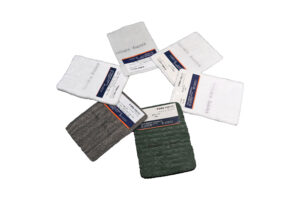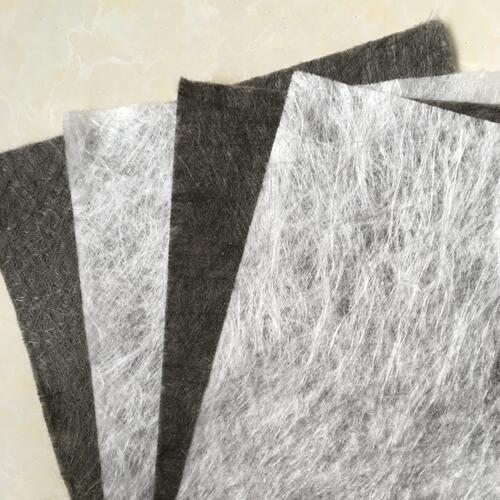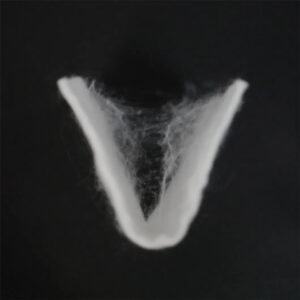How to filter geotextile?
Geotextile is a synthetic material used in land engineering and soil management, and one of its main uses is filtration. Geotextiles achieve filtration functions through their special materials and structures, thereby controlling the drainage of soil particles, preventing erosion, and maintaining the stability of engineering structures. Here’s how geotextile filtration works:
Screening Particles: The pore structure of geotextile allows moisture to pass through while effectively preventing soil particles from penetrating. The pore size of geotextiles usually varies according to specific applications, and geotextiles with different pore sizes can be selected according to engineering needs.
Water flow control: Geotextiles allow water flow to penetrate its surface and distribute along the plane of the geotextile, rather than just permeating in one direction of the geotextile. This helps control the flow of water and prevents soil erosion.
Separating materials: Geotextiles can create a separation layer between two soil layers of different types or particle sizes, preventing them from mixing or seeping into each other. This is very useful in land works, especially in road base and drainage works.
Protecting Engineered Structures: Geotextiles can be used to protect engineered structures from soil erosion. For example, on riverbanks, levees, rock slopes or other land engineering projects, geotextiles can be placed on the soil surface to prevent soil erosion.
Increased soil stability: Geotextiles can also increase soil stability, especially where additional support is required during land projects. It can be used as a reinforcing layer for soil structures.
The filtration effect of geotextile depends on the selection of its material, the design of the pore structure and the correct installation method. It is important to select the appropriate type and specification of geotextile to ensure it can effectively perform its filtration function in the project. Geotextiles are used in a wide range of applications, including soil stabilization, drainage, road construction, river bank protection and other fields.

What are the benefits of geotextile filtration?
Geotextile filtration offers several important benefits in land engineering and soil management, improving project quality, reducing environmental impact, and providing sustainable solutions. Here are the main benefits of geotextile filtration:
Soil Stability: Geotextiles can be used to enhance soil stability, especially in soft or erosion-prone soils. It provides additional support and prevents soil movement and erosion, thus maintaining the integrity of the landworks structure.
Separation and Filtration: Geotextiles can separate soil layers of different particle sizes and prevent them from mixing together. At the same time, it filters out fine particles, allowing moisture to pass through while blocking particles from penetrating, helping to maintain soil consistency.
Erosion Control: Geotextiles can be used to control erosion of soil by water flow. It can reduce soil erosion caused by water flow and protect land and engineering structures in projects such as river banks, embankments, rock slopes, and roads.
Drainage Management: Geotextiles promote drainage, allowing excess water to escape through the pore structure of the geotextile. This is essential for maintaining good drainage in roads, drainage systems and farmland.
Material Protection: In engineering projects, geotextiles can be used to protect other materials, such as strata, pipes or underground services, from soil and water erosion.
Sustainability: Geotextiles can reduce environmental impact and improve project sustainability. By preventing soil erosion and maintaining land quality, geotextiles help protect natural ecosystems.
Cost Effectiveness: In many cases, using geotextiles can reduce project costs. It can reduce maintenance and repair costs, extend project life, and reduce the need for raw materials and resources.
In summary, geotextile filtration provides a variety of benefits, including soil stability, erosion control, separation and filtration, drainage management, material protection, sustainability, and cost-effectiveness. This makes it an important material in land engineering and is widely used in various engineering projects.

What are the application fields of geotextiles?
Geotextile is a synthetic material used in land engineering and soil management and has a variety of applications. Here are some common geotextile application areas:
Road and Rail Construction: Geotextiles are widely used in road and rail construction to enhance soil stability, separate different soil layers, control drainage and reduce erosion. It can be used for road base, embankments, bridge supports, etc.
River Bank and Levee Protection: The application of geotextiles in river bank and levee protection can prevent water flow from eroding soil and maintain the integrity of river banks and levees.
Drainage systems: Geotextiles can be used in drainage systems to facilitate groundwater drainage and prevent soil erosion. It is commonly used in infiltration wells, infiltration walls and land drainage systems.
Soil Improvement and Stabilization: Geotextiles can be used to improve loose or unstable soil and increase soil stability, especially on slopes, rocky slopes and excavation projects.
Horticulture and Agriculture: In horticulture and agriculture, geotextiles are used for soil mulching, weed control and soil protection, thereby improving the productivity of the land.
Environmental protection: Geotextiles are also used in environmental protection projects, such as soil remediation, water body remediation, wetland restoration and soil erosion prevention to reduce environmental pollution and improve ecosystems.
Foundation Engineering: Geotextiles can be used in foundation engineering projects, such as underground pipes and foundation supports, to protect soil and maintain the stability of engineering structures.
Mining: In the mining sector, geotextiles can be used to control tailings stockpiles and slag ponds to reduce negative impacts on the environment.
Water Resources Management: Geotextiles have a wide range of applications in water resources management such as reservoirs, river restoration and coastal protection to control water flow and erosion.
Landscape design and construction: Geotextiles can be used for soil protection and vegetation support in landscape design, as well as soil stabilization and foundation support in construction projects.
These are just some examples of geotextile application areas, its versatility in land engineering and soil management makes it important in a variety of engineering projects and environmental applications. Depending on specific needs, different types and specifications of geotextiles can be selected.
Author

Founded in 2002, Tinhy's team focuses on the manufacturing, marketing, installation, application and research and development of geosynthetic materials.
View all posts






